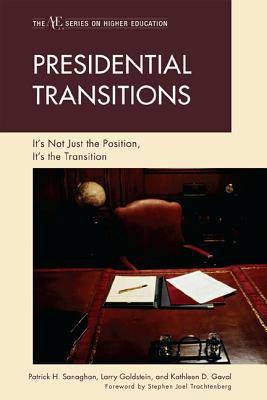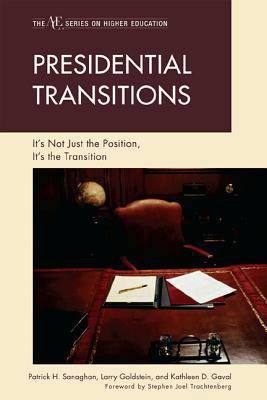
- Afhalen na 1 uur in een winkel met voorraad
- Gratis thuislevering in België vanaf € 30
- Ruim aanbod met 7 miljoen producten
- Afhalen na 1 uur in een winkel met voorraad
- Gratis thuislevering in België vanaf € 30
- Ruim aanbod met 7 miljoen producten
Zoeken
Presidential Transitions
It's Not Just the Position, It's the Transition
Patrick H Sanaghan, Larry Goldstein, Kathleen D Gaval
€ 100,45
+ 200 punten
Omschrijving
A presidential transition has a major impact on the life of an institution. Hundreds of presidential transitions take place annually, and when they are not amicable and carefully orchestrated, they can scar both the institution and the president. Sanaghan, Goldstein, and Gaval estimate that more than one-third of the presidential transitions in higher education are involuntary and have a negative effect on the institution. This book is designed to provide assistance to presidents, trustees, faculty, and other important stakeholder groups and help them avoid the pitfalls of poorly managed transitions. The authors discuss how, with proper planning, care, and execution, this presidential passage can be an opportunity for a transitioning president, and those who surround him or her, to write a positive chapter in the campus history. Readers will discover that appropriately addressing the anxiety that accompanies major transitions_for both those joining the institution and those already present_is essential. Dozens of presidents, chancellors, board members, and other senior executives were interviewed for this book. Each major chapter includes selected personal observations, from these interviews, which illustrate the critical issues addressed in the book.
Specificaties
Betrokkenen
- Auteur(s):
- Uitgeverij:
Inhoud
- Aantal bladzijden:
- 224
- Taal:
- Engels
- Reeks:
Eigenschappen
- Productcode (EAN):
- 9781607095699
- Verschijningsdatum:
- 16/11/2009
- Uitvoering:
- Paperback
- Formaat:
- Trade paperback (VS)
- Afmetingen:
- 150 mm x 226 mm
- Gewicht:
- 340 g

Alleen bij Standaard Boekhandel
+ 200 punten op je klantenkaart van Standaard Boekhandel
Beoordelingen
We publiceren alleen reviews die voldoen aan de voorwaarden voor reviews. Bekijk onze voorwaarden voor reviews.











